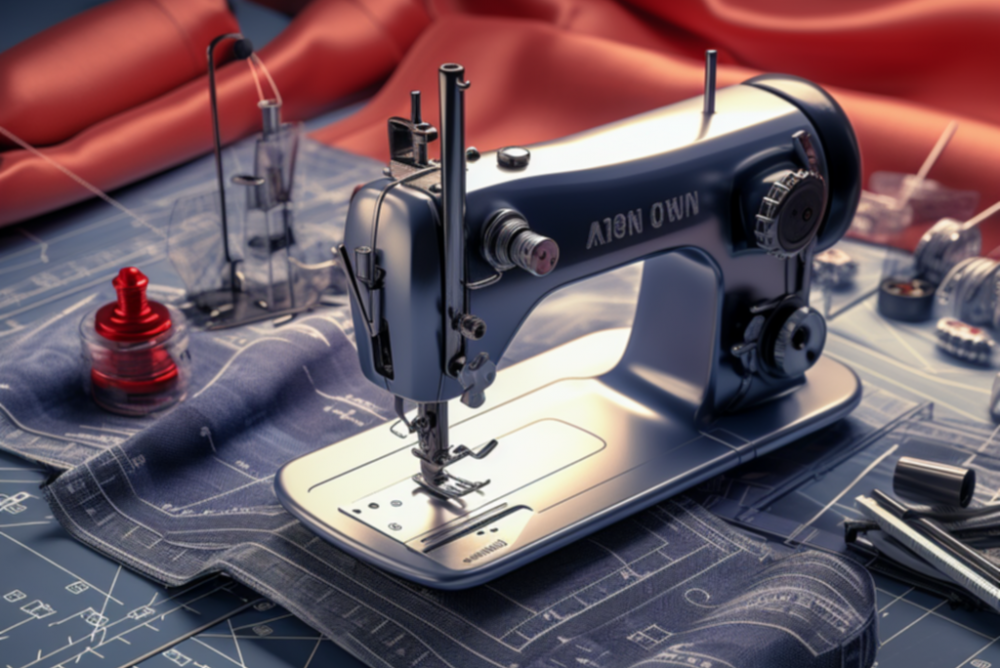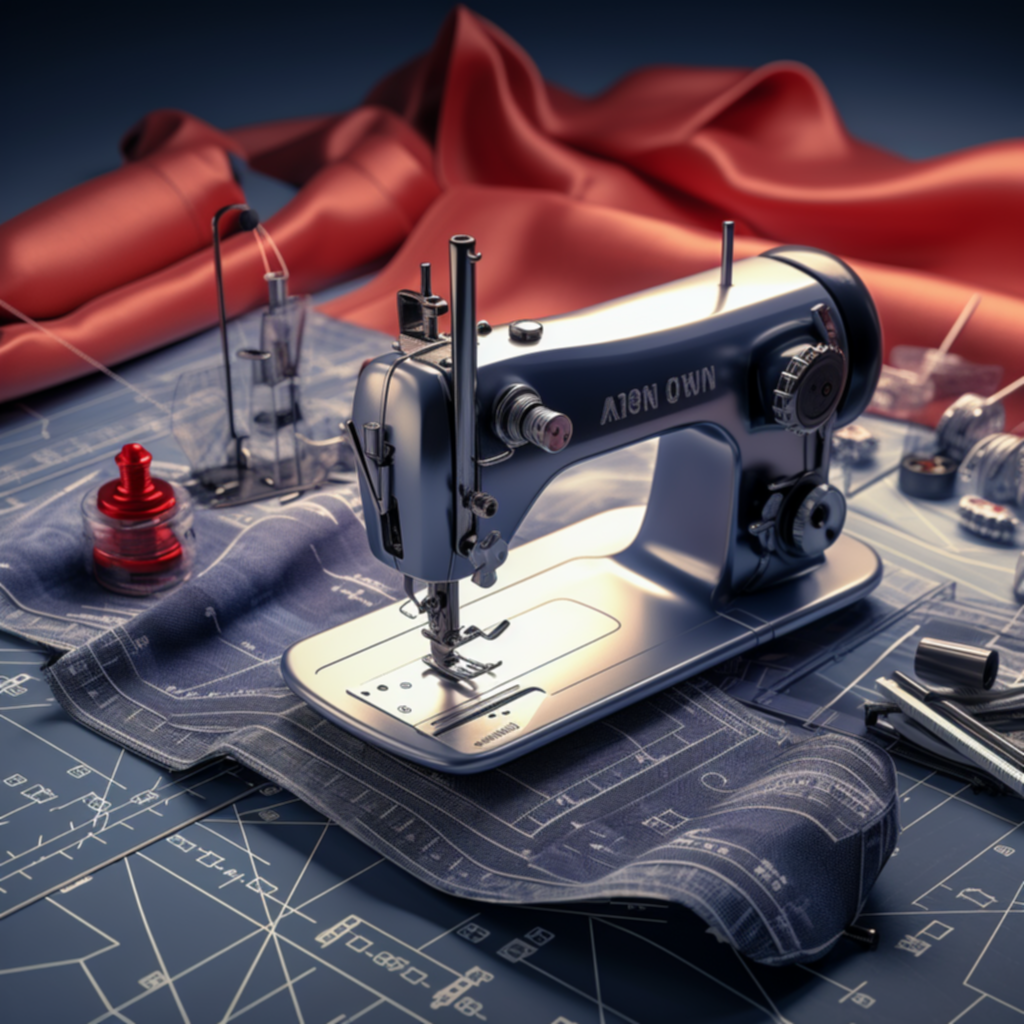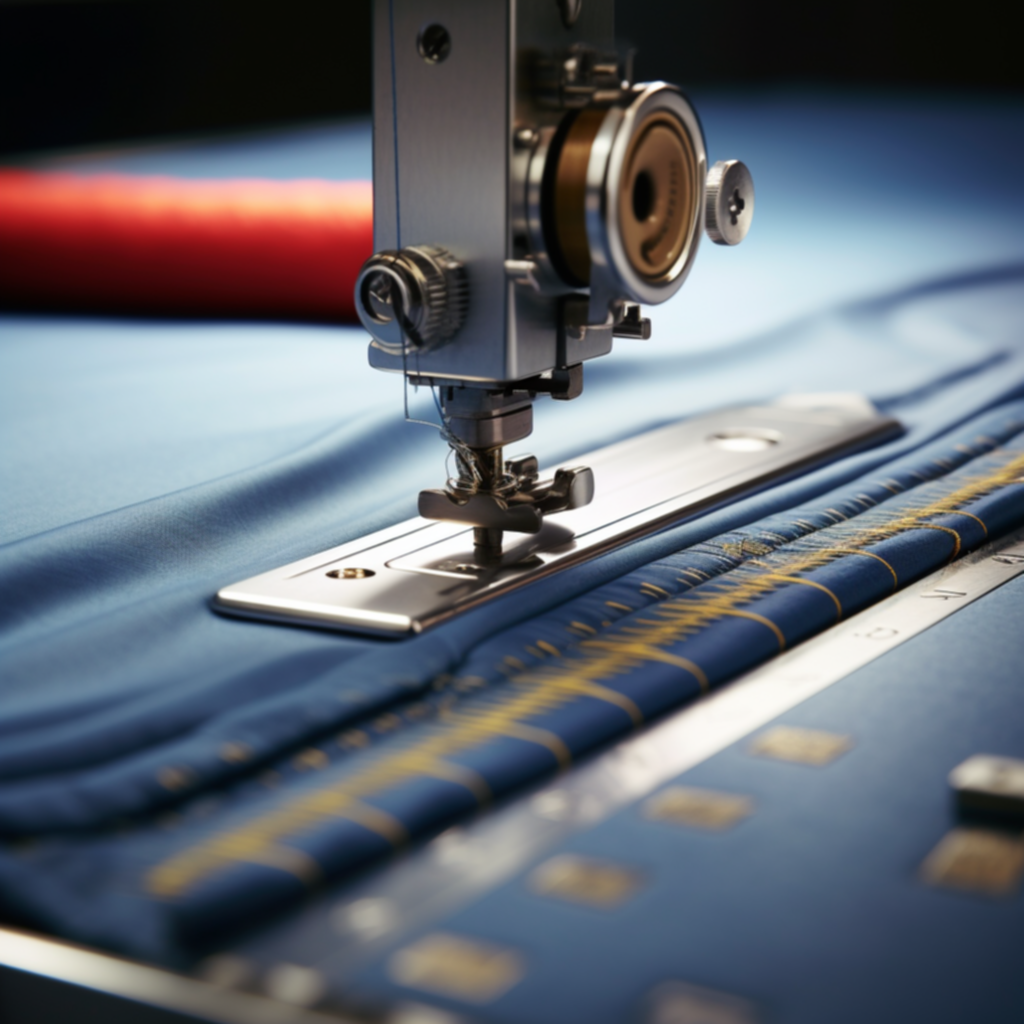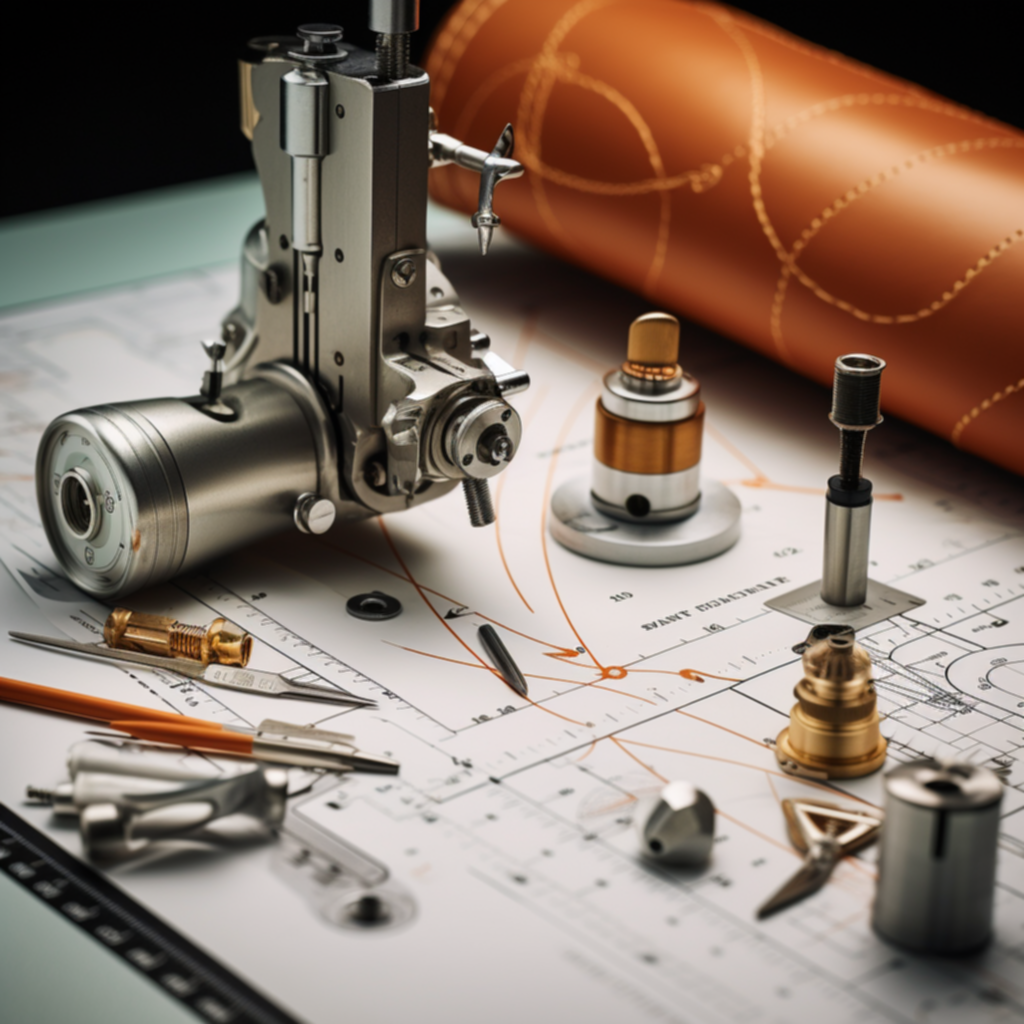Mastering Seams: Garments Manufacturing Insights 2023


The fashion industry, ever-evolving and forward-thinking, frequently overlooks one fundamental component of garment construction: the seam. While fashion designers and consumers alike focus on silhouettes, textures, and fabrics, the "humble" seam serves as the backbone of any piece of clothing. Seams are the architecture holding the edifice of fashion together, determining not just the garment's structural integrity but also its aesthetics and comfort.
In recent years, particularly as we step into 2023, advancements in seam technologies have paved the way for more durable, aesthetically pleasing, and sustainable fashion. These innovations are not just for the luxury market but have applications across a range of textiles, from everyday wear to specialized occupational garments.
Choosing the right type of seam for a garment is like selecting the appropriate foundation for a building. Factors such as the type of fabric, the garment's intended use, and aesthetic preferences all influence this choice. And with growing awareness about sustainable practices, even the environmental impact of seam types is now a consideration for both manufacturers and consumers.
This comprehensive guide aims to shed light on the different types of seams utilized in garments manufacturing as of 2023. It explores the importance of seam selection, delves into various seam types, and discusses emerging trends in seam technology. Whether you're a fashion student, a clothing manufacturer, or simply someone curious about the complexities of garment creation, this article promises in-depth insights rooted in expertise, experience, authoritativeness, and trustworthiness.
What is a Seam?
A seam might seem like a simple concept, but it's much more than just stitching two pieces of fabric together. By definition, a seam is a line where two or more fabrics are joined together with a series of stitches. This seemingly straightforward technique is anything but simple when we dive into its variations and technicalities.
Anatomy of a Seam
Understanding a seam starts with its anatomy. At its core, a seam consists of:
- Stitch: The basic unit that holds the seam together.
- Seam Allowance: The fabric extending beyond the seam line, usually on the inner side of the garment.
- Seam Line: The actual line where the stitch runs through the fabric.
Stitching Techniques
Stitching techniques vary based on machinery, the type of fabric, and the specific requirements of the garment. Some common stitching methods are:
- Lockstitch: Commonly used for its strength and durability.
- Chain Stitch: Often used for its elasticity.
- Overlock Stitch: Primarily used for finishing edges.
The Seam's Role
A seam's role transcends beyond just joining fabric. It contributes to:
- Structure: Providing shape and integrity to the garment.
- Aesthetics: Influencing the overall look, particularly in decorative seams.
- Functionality: Enabling features like pockets, zippers, and other functional elements.
In essence, seams are an intricate part of garment construction that require careful consideration and expertise. The selection of the seam type often depends on a multitude of factors that range from the purpose of the garment to the type of fabric used.

Importance of Seam Selection
Selecting the right seam for a garment is not merely a technical decision; it’s a confluence of function, aesthetics, and sustainability. The chosen seam can significantly impact a garment’s durability, comfort, and even its price point. Below are some reasons why seam selection is crucial in garment manufacturing:
Durability and Longevity
A garment’s lifespan is heavily influenced by the quality and type of its seams. For instance, heavy-duty workwear demands strong and resilient seams to withstand rigorous use. On the other hand, delicate fabrics like silk may require more refined seam techniques that don't compromise the fabric’s integrity.
Aesthetics and Design
The seam type isn't just a structural element; it also contributes to the garment's overall appearance. Designers often use specialized seams for their decorative value. Think of the contrasting flat-fell seams on denim jeans or the elegant French seams in high-end blouses; these choices are as much about visual appeal as they are about function.
User Comfort
Different seams offer varying levels of comfort. Some seams are flat and almost unnoticeable, providing a smooth contact with the skin, ideal for sportswear or undergarments. Others might be bulkier, more suited for outerwear where comfort against the skin is less of a concern.
Cost Efficiency
Seam types also have a direct impact on manufacturing costs. Simple seams are generally quicker and less expensive to produce, but may not offer the same durability or aesthetic quality as more intricate seam types. Therefore, understanding the trade-offs between cost and quality is crucial in seam selection.
Environmental Impact
Sustainability is increasingly becoming a critical factor in fashion. Seams that are durable and can withstand multiple wash cycles are not just a hallmark of quality but also contribute to a garment's longevity, thereby reducing its environmental footprint.
Tailoring to Fabric Type
Each fabric type—be it cotton, polyester, or a blend—has unique properties that make it more suited to specific seam types. Misalignment between fabric and seam can result in issues like puckering or reduced durability.
In sum, the importance of seam selection in garment manufacturing is multi-faceted, encompassing everything from the garment's functionality and aesthetic appeal to its production cost and environmental impact.

Types of Seams Used in Garments
The world of seams is extensive and varied, each offering its unique advantages and drawbacks. The choice of seam can significantly influence a garment’s durability, aesthetics, and utility. Here is an in-depth look at some of the most commonly used seams in the garment industry as of 2023:
4.1 Plain Seam
Definition: The plain seam is the simplest type of seam and is used predominantly in everyday garments. It involves placing two pieces of fabric right sides together and stitching them along a line.
Applications: Casual wear, linens, and non-stretch fabrics.
Advantages:
- Quick to produce
- Economical
- Versatile in application
Disadvantages:
- May require finishing to prevent fraying
- Not ideal for fabrics that unravel easily
4.2 French Seam
Definition: A French seam encapsulates the fabric edges within the seam itself, making it a clean and polished option.
Applications: Fine fabrics, lingerie, and bridal wear.
Advantages:
- Provides a clean, finished look
- Ideal for sheer and lightweight fabrics
- Adds strength to delicate fabrics
Disadvantages:
- Time-consuming
- Not suitable for bulky fabrics
4.3 Lapped Seam
Definition: In a lapped seam, one piece of fabric overlaps the other, and a single line of stitching secures them in place.
Applications: Leather, suede, and other non-fraying fabrics.
Advantages:
- Ideal for heavy and non-fraying materials
- Adds visual interest
Disadvantages:
- Can be bulky
- Not suitable for stretchable or thin fabrics
4.4 Flat-Fell Seam
Definition: This seam involves sewing the fabrics together and then folding and stitching the seam allowance to the fabric.
Applications: Denim jeans, sportswear, and workwear.
Advantages:
- Extremely durable
- Professional, finished appearance
Disadvantages:
- Not suitable for delicate or bulky fabrics
- More time-consuming than plain seams
4.5 Bound Seam
- Definition: Bound seams are sealed with a strip of fabric (binding) that wraps around the raw edges.
- Applications: Outerwear, tailored garments, and upholstery.
Advantages:
- Adds strength
- Provides a decorative finish
Disadvantages:
- Can be bulky
- Requires additional material for binding
4.6 Slot Seam
Definition: This seam features a slot of fabric between two joined pieces, often in a contrasting color or material.
Applications: Decorative purposes, often seen in sportswear or casual wear.
Advantages:
- Adds visual intrigue
- Allows for creative design options
Disadvantages:
- Not the most durable seam type
- Time-consuming to produce
Each seam type serves a particular purpose and works best with certain fabric types and garment applications. Therefore, understanding these nuances is critical for anyone involved in garment production or design.

Trends and Innovations in Seam Technology for 2023
The garment industry is not static; it evolves continuously to meet new consumer demands, technical possibilities, and sustainability goals. The year 2023 is no exception, offering a range of innovations and trends in seam technology. These are not merely for aesthetics or durability; they also address crucial issues such as sustainability and efficiency. Here's a closer look at some groundbreaking trends in seam technology:
5.1 Sustainable Seam Techniques
Sustainability is not a buzzword; it's a necessity. New techniques focus on using recycled materials for seams, biodegradable threads, or even water-soluble materials for temporary seams in garment assembly.
Examples:
- Organic cotton threads
- Seams made from recycled polyester
5.2 Ultrasonic Seaming
Definition: Ultrasonic seaming uses high-frequency vibrations to fuse fibers together, eliminating the need for traditional stitching.
Advantages:
- Reduced bulk
- Enhanced waterproofing
- Quicker production times
- Applications: Sportswear, outdoor gear, and garments requiring water resistance.
5.3 Heat-sealed Seams
Definition: These seams use heat to seal the edges of synthetic or coated fabrics.
Advantages:
- Completely waterproof
- Smooth finish that minimizes skin irritation
- Applications: Swimwear, medical garments, and weather-resistant clothing.
5.4 Laser-cut Seams
Definition: These seams are crafted using precision laser technology to cut and seal the fabric edges.
Advantages:
- Minimal fraying
- Reduced material waste
- High precision
- Applications: High-fashion garments, intricate designs.
5.5 Smart Seams
Definition: These seams incorporate conductive threads or miniaturized electronics, allowing them to serve as data collection points.
Advantages:
- Seamless integration of technology into garments
- Data collection for athletic performance, medical monitoring, etc.
- Applications: Smart clothing, healthcare garments.
5.6 3D-printed Seams
Definition: Advanced 3D printing technologies allow for custom-designed seams, which can be printed directly onto the fabric.
Advantages:
- Customization
- Unique design possibilities
- Applications: Customized clothing, high-end fashion.
Understanding these trends is crucial for manufacturers, designers, and consumers alike, especially for those keen to remain at the forefront of fashion and technology convergence. These innovative seam technologies offer fresh avenues for functionality, sustainability, and design, redefining the very fabric of garment construction.
Seam Selection Based on Fabric Type
Choosing the right seam for a particular fabric is much like pairing wine with a meal; the right combination elevates the experience, while a mismatch could lead to less-than-desirable results. Each fabric comes with its unique set of properties—stretch, thickness, fraying tendency—that will influence the choice of seam. Here’s a guide to making an informed decision:
6.1 Cotton
Recommended Seams: Plain Seam, Flat-Fell Seam
Why: Cotton is versatile but tends to fray, making seams like flat-fell both durable and clean.
6.2 Polyester and Synthetic Blends
Recommended Seams: Plain Seam, Bound Seam
Why: These fabrics are less prone to fraying, allowing for simpler seams. However, they can be slippery, making bound seams an excellent choice for added grip and stability.
6.3 Wool
Recommended Seams: Lapped Seam, Plain Seam
Why: Wool is thick and doesn’t fray easily. Lapped seams are ideal as they can handle the fabric’s bulk.
6.4 Silk and Fine Fabrics
Recommended Seams: French Seam, Bound Seam
Why: These fabrics require delicate handling. French seams provide a clean finish, hiding the fabric edges within the seam itself.
6.5 Stretch Fabrics (Lycra, Spandex)
Recommended Seams: Overlock Stitch, Flatlock Seam
Why: These fabrics need seams that can stretch without breaking, making overlock and flatlock seams ideal.
6.6 Leather and Suede
Recommended Seams: Lapped Seam, Topstitched Seam
Why: These fabrics are heavy and don’t fray, making lapped seams an excellent choice for durability and aesthetics.
6.7 Coated and Weatherproof Fabrics
Recommended Seams: Heat-sealed Seams, Ultrasonic Seaming
Why: These specialized fabrics require seams that maintain their waterproof or weather-resistant properties.
6.8 Denim
Recommended Seams: Flat-Fell Seam, Topstitched Seam
Why: Denim is a thick, durable fabric that requires equally robust seams. Flat-fell seams are almost synonymous with denim, providing durability and a classic look.
Understanding the idiosyncrasies of each fabric type can drastically improve the seam selection process, affecting everything from the garment's longevity to its wearability and comfort. It serves as a crucial chapter in the book of garment manufacturing, one that deserves attention and expertise.
Aspects to Consider Regarding Seam Durability and Strength
The quest for the perfect garment does not end with choosing the right fabric or the most eye-catching design; the seam's durability and strength are equally critical. A garment is as strong as its weakest seam. In this chapter, we will discuss the key aspects to consider when aiming for durable and strong seams.
7.1 Thread Material
Significance: The type of thread used can significantly influence the seam's strength. Threads made of polyester, for instance, offer good tensile strength and durability.
Considerations:
- Natural fibers like cotton for organic garments
- Synthetic threads for stretchability and durability
7.2 Stitch Density
Significance: The number of stitches per inch (SPI) can affect both the seam's appearance and durability. Higher SPI generally results in stronger seams but may also make the seam stiffer.
Considerations:
- A standard SPI range for apparel is between 10-12 for most fabrics.
- Heavy-duty fabrics may require a lower SPI for flexibility.
7.3 Seam Allowance
Significance: The seam allowance, or the extra fabric extending beyond the seam line, provides a buffer against stress and wear.
Considerations:
- Too little seam allowance can lead to fraying or seam failure.
- Too much can cause bulkiness, affecting the garment's fit and comfort.
7.4 Seam Positioning
Significance: Where the seam is positioned on the garment can impact its longevity. Stress points like elbows or knees often require reinforced seams.
Considerations:
- Reinforced seams at high-stress points
- Strategic placement to avoid skin irritation
7.5 Seam Finishes
Significance: Finishing techniques like serging or zigzag stitching can protect the seam from unraveling, thereby enhancing its durability.
Considerations:
- Use finishes that complement the fabric type.
- Consider the impact on the garment's flexibility and comfort.
7.6 Testing and Quality Control
Significance: Seam strength should be rigorously tested to withstand various stresses like stretching, washing, and general wear and tear.
Considerations:
- Tensile strength tests
- Abrasion resistance tests
- Quality audits
By paying close attention to these aspects, manufacturers can create garments that not only look good but also last longer. It's an intricate balancing act that combines material science, engineering principles, and a dash of artistry, resulting in garments that stand the test of time.
Best Practices in Seam Selection for Garments Manufacturing
The ability to select the appropriate seam for a specific garment requires a synthesis of technical knowledge, artistic sensibility, and practical application. This final chapter aims to encapsulate best practices in seam selection, serving as a comprehensive guide for professionals in the industry or those simply interested in the intricate art of garment making.
8.1 Understand Fabric Properties
Action: Always begin with a thorough understanding of the fabric you’re working with. Conduct tests to evaluate stretch, fraying tendency, and weight.
8.2 Prioritize Durability for High-Stress Areas
Action: For garments designed for rigorous use, like sportswear or work clothes, prioritize durable seams like the flat-fell or double-stitched seams.
8.3 Consider Aesthetics
Action: Sometimes, the choice of seam is driven by design. A French seam, for instance, may be selected for its clean finish, rather than durability.
8.4 Keep Sustainability in Mind
Action: Utilize sustainable threads or technologies like ultrasonic seaming whenever possible. This is not just good for the planet but increasingly becoming a consumer demand.
8.5 Seam Sampling
Action: Before mass production, create a sample garment to evaluate seam performance under real-world conditions, including washing and wear and tear.
8.6 Invest in Quality Threads and Tools
Action: Quality raw materials and state-of-the-art machinery can drastically improve seam quality. Skimping on these essentials is counterproductive in the long run.
8.7 Continuous Training and Quality Control
Action: Ensure that staff is well-trained in new seam technologies and quality control methods. A well-informed team is crucial for consistently high-quality output.
8.8 Document Seam Specifications
Action: Keep detailed records of seam types, thread material, and other specifications for each garment type. This aids in consistency and serves as a valuable reference for future projects.
By adhering to these best practices, you set the stage for producing garments that are both beautiful and built to last. Seam selection, far from being a mundane detail, emerges as a pivotal element in garment manufacturing. A well-chosen seam not only holds the fabric together but also unifies the various elements of design, durability, and consumer satisfaction into a cohesive whole.
Conclusion and Final Thoughts
Seams may appear as mere stitches on fabric, but as we've explored, they are so much more than that. They are the invisible heroes of garment manufacturing, holding together layers of fabric while accommodating stress and movement. The right seam can make or break a garment, influencing everything from its durability and comfort to its overall aesthetic appeal.
The year 2023 has brought us exciting developments in seam technologies, a burgeoning focus on sustainability, and an increasing alignment with consumer needs. As we look towards the future, the industry is poised for even greater innovation, bringing us garments that are not just well-crafted but also ethically produced and environmentally friendly.
Whether you're a manufacturer, designer, or a curious consumer, understanding the intricacies of seams gives you a more nuanced appreciation of the garments you create or wear. It opens your eyes to the art and science behind something as simple as a shirt or as complex as a haute couture gown.
As this guide comes to a close, I hope you walk away with a renewed sense of admiration for the little details that make our everyday textiles functional and beautiful. Seam selection may be a small part of the vast world of garment manufacturing, but it is by no means insignificant.
Thank you for reading this comprehensive guide on "Types of Seam Used in Garments Manufacturing 2023." Your journey through the complex, yet fascinating world of seams doesn't have to end here. As the textile industry continues to evolve, so will the technologies and techniques surrounding seams, making it a topic worth revisiting time and again.





-500x500.jpg)
-500x500.jpg)
-500x500.jpg)
-500x500.jpg)
-500x500.jpg)